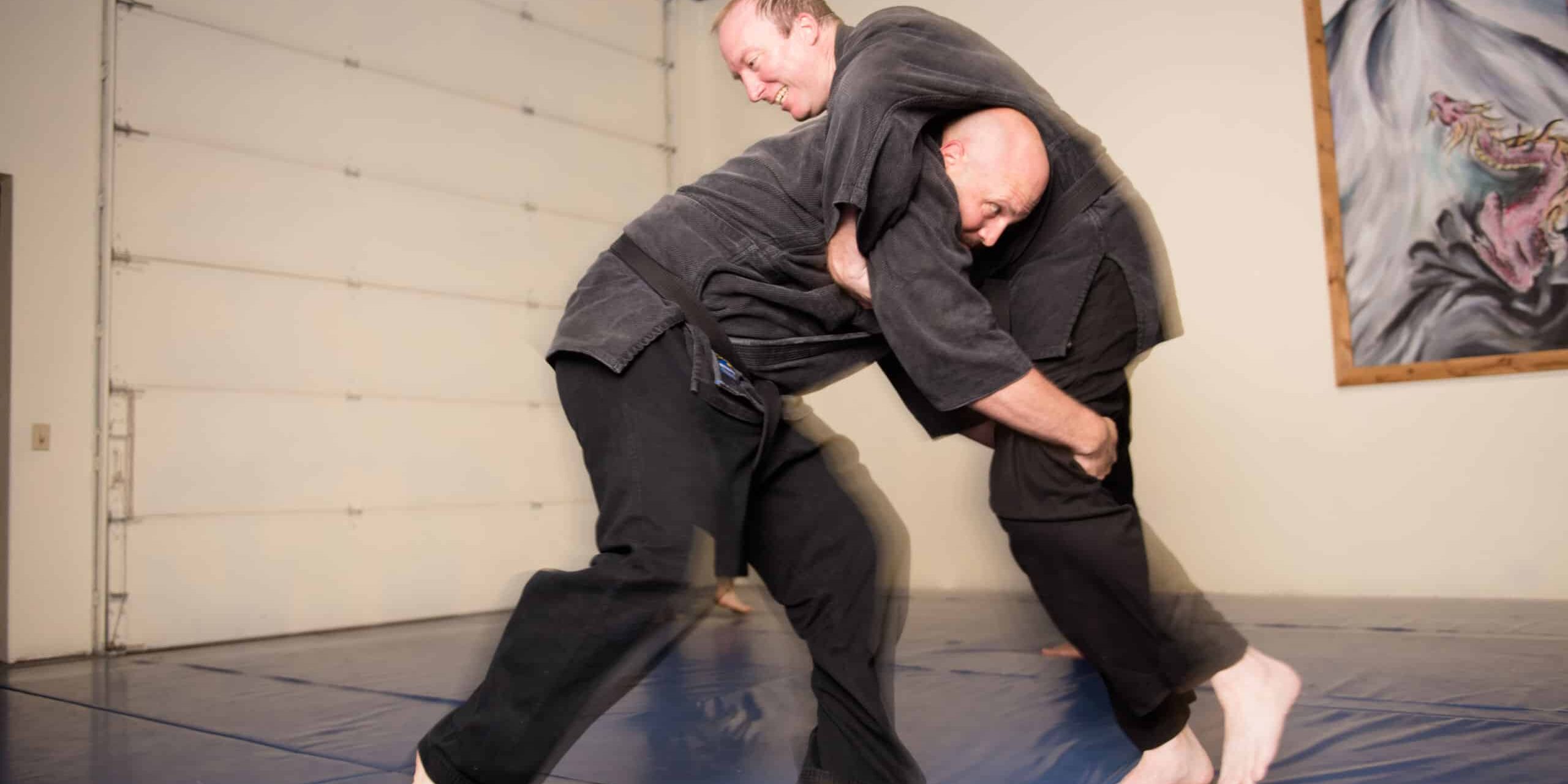What exactly is self-defense?
From my experience teaching thousands of people over the years, students who take self-defense and martial arts classes typically want the same thing: the ability to defeat an attacker in any situation that might cause harm to them or their loved ones. If this is the goal, only continuous, regular martial arts training will help you achieve it.
Single vs ongoing classes
Many businesses teach short, one-off self-defense courses. We certainly do. You’ll learn some valuable tools like situational awareness, verbal deterrents, and simple strikes. If the class is well-structured, these skills will be reinforced with some practice applying them under an adrenal response. The goal is usually to help students learn how to function under the same kinds of stress as a real self-defense encounter, and to cause enough harm to an attacker to allow them to get away. While these short courses are designed for limited situations, most people expect that completing one will allow them to defeat an attacker in any situation.
But this just isn’t true. For one thing, the brain and nervous system need practice and repeated adrenaline exposure to be able to access learned skills during the confusion of a real encounter. This takes time, as does the practice and nuanced understanding that allows those skills to be adapted in real time. This kind of training just can’t be completed during a single short course because repetition and variation are key to building efficient and effective defense skills.
If self-defense implies defense in lots of possible situations, what that means to each individual student varies. Regardless, continued classes are key, and they need to be grounded in real, combative martial arts. These can be hard to find because of the growing popularity of martial arts competition. Tournament-style martial arts focus on winning within strict rules and situations, and they’ve made it harder and harder to find effective real-world systems.
Combative systems
The farther we’ve moved from the 1900s, the fewer options there are. Even the popular Korean art of Taekwondo moved very quickly to a points system focused on limited strikes and structured kicks. Japanese traditional systems like karate have similarly limited techniques and often award points for kata, judging solo skills as they might judge a dance. Even what most students recognize as jiujitsu or Brazilian jiujitsu (BJJ) has morphed into a variation on high school or college wrestling in just forty years.
Combative systems are much more effective for real application but are likely to blend with competition and points structures. Krav Maga is a good example: while effective as a real martial art, what most commercial locations teach is a weekend or week-long certification course. Real Krav Maga looks very similar to traditional jujitsu because that’s where it came from, but most of the local schools are more focused on filling the gaps identified in showier systems like Taekwondo.
How to find the right class
If you’re looking for a good martial arts school for the goal of learning complete and functional self-defense, you’ll have to use some critical thinking.
To start, look through the hype and advertising to assess what a school is doing. Do they focus on competition? Then they probably have limited self-defense applications because they’ll require successful competition for advancement. Do they have some students who compete and some who don’t? They probably still have limited self-defense applications because they’ll be heavily encouraging students to participate in competitions, even if winning isn’t necessary for attaining new ranks. A focus on competition clouds and limits effective self-defense skills. My sensei always said, “if it’s banned in competition, you want to do it and learn it for real life.” His reasoning was that techniques are usually banned because of safety concerns. But in real self-defense situations, you’re not concerned for your attackers’ safety and should do whatever you can to protect your own.
Next, look at the school’s advancement requirements. Every system should have a set list of required techniques to advance to the next level. Some schools, especially within the BJJ system, only teach what’s on the list for that day and not what fits a student’s skill level. We learn and progress more effectively if our skills are scaffolded from simple to more complicated. Students should work on a set of skills and then move to the next while continuing to practice what they’ve already learned.
A third thing to look for is whether they regularly spar in class, and how they go about it. What’s most important is whether sparring requires a ton of padding: many systems spar as hard as possible, risking injury without protective equipment. Sparring should not cause injury or stress to the participants, and only requires minimal gear when done correctly—because it’s a game of playing, learning, and failing. Stress limits learning and causes bad habits; if you’re afraid, then you’ll do only what worked for you before rather than learning new applications and techniques.
If self-defense is what you’re after, pick a system that will teach you skills for unpredictable and aggressive situations. You can’t prepare for real violence if you’re focused on competition and trophies. Pick your training method wisely, according to your learning goals.



